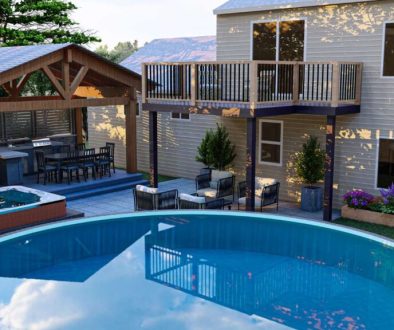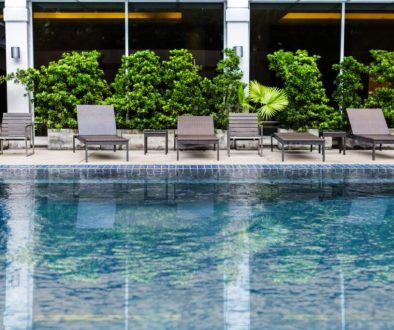Creating Incentives for Long-Term Tenants
Creating Incentives for Long-Term Tenants
Discover effective strategies for creating incentives that encourage long-term tenancy. Learn how to enhance tenant satisfaction and retention.
Creating Incentives for Long-Term Tenants
In the ever-evolving landscape of rental properties, landlords are continually facing challenges related to tenant retention. With rising competition and changing expectations, fostering long-term relationships with tenants is more crucial than ever. This blog post delves into the strategies for creating incentives that promote long-term tenancy. We will explore various approaches, from financial incentives to community-building efforts, and offer practical tips for landlords seeking to enhance tenant satisfaction and loyalty.
Understanding the Importance of Long-Term Tenancy
- Long-term tenants provide stability and predictability in rental income, reducing vacancy rates and turnover costs.
- Maintaining a reliable tenant base can lead to lower marketing expenses and increased property value over time.
- Studies reveal that retaining existing tenants is significantly more cost-effective than acquiring new ones. The cost of turnover can include lost rent, marketing expenses, and the costs associated with preparing the unit for a new tenant.
- A stable tenant demographic contributes to community cohesion and can enhance the property’s reputation.
For example, a landlord with a good relationship with long-term tenants can benefit from fewer disputes and a sense of mutual respect, which can lead to better property maintenance and care.
Financial Incentives: Offering Rent Discounts and Bonuses
- One of the most straightforward approaches to incentivizing long-term tenancy is through financial benefits.
- Offering a rent discount for signing a longer lease can entice tenants to commit for an extended period. For example, reducing the monthly rent by 5% for tenants who sign a two-year lease can lead to significant savings over time.
- Consider implementing a loyalty rewards program where tenants receive a bonus after a certain period of staying in the property, such as a month of free rent for every year they stay.
- Providing options for reduced security deposits for long-term tenants can also be an attractive incentive.
A comparative analysis of properties that offer incentives versus those that do not could reveal that those with financial benefits tend to maintain lower vacancy rates and higher tenant satisfaction.
Enhancing Property Features: Upgrades and Amenities
- Property enhancements can significantly improve tenant satisfaction and promote long-term tenancy.
- Invest in upgrades that appeal to tenants, such as modern appliances, energy-efficient systems, or aesthetically pleasing landscaping.
- Offering additional amenities such as fitness centers, swimming pools, or community gardens can create a desirable living environment.
- Consider allowing tenants to customize their living spaces within reasonable limits, such as paint colors or garden designs, to foster a sense of ownership.
For example, a building that provides a community lounge or event space can enhance tenant interaction and create a sense of belonging, making long-term commitment more likely.
Building a Strong Community: Social Engagement and Events
- Creating a sense of community is a powerful motivator for tenants to stay long-term.
- Organizing regular social events, such as holiday parties, summer barbecues, or tenant appreciation days, can foster relationships among tenants and with property management.
- Establishing communication channels, such as a community newsletter or a dedicated online platform, can help tenants feel connected and heard. This can be particularly effective in larger apartment complexes or multi-unit properties.
- Encouraging tenant involvement in decision-making processes, such as feedback on property management or suggestions for events, can enhance tenants’ sense of belonging.
A survey conducted among tenants in properties with active community engagement revealed that those who participated in events felt more satisfied and were more likely to renew their leases.
Regular Communication: Keeping Tenants Informed
- Consistent communication is key to maintaining strong tenant relationships.
- Regular updates regarding property maintenance, upcoming events, and neighborhood news can keep tenants engaged.
- Establishing clear channels for tenants to voice concerns or requests can demonstrate that their opinions matter.
- Consider using digital platforms, such as tenant portals or apps, to streamline communication and enhance accessibility.
For example, a landlord who sends monthly newsletters featuring community news, maintenance updates, and tenant spotlights can foster a sense of community while keeping tenants informed.
Flexible Lease Options: Catering to Tenant Needs
- Providing flexibility in lease agreements can cater to diverse tenant needs and encourage long-term commitments.
- Offering various lease terms, such as month-to-month options or shorter terms with renewal incentives, can attract tenants with different lifestyles.
- Consider allowing tenants to negotiate lease terms based on their specific circumstances, such as job changes or family situations.
A flexible leasing policy can be particularly appealing in today’s dynamic job market, where tenants may prioritize adaptability in their living arrangements.
Support and Maintenance: Ensuring Tenant Satisfaction
- Proactive property management can significantly influence tenant retention.
- Regular inspections, timely maintenance responses, and a well-maintained property are essential for ensuring tenant satisfaction.
- Providing tenants with contact information for property management, maintenance staff, and emergency services can offer peace of mind.
For instance, a landlord who promptly addresses maintenance requests and conducts regular tenant check-ins can build trust and rapport with tenants.
Feedback Mechanisms: Listening to Tenant Concerns
- Establishing feedback mechanisms is crucial for understanding tenant needs and improving their experiences.
- Implementing regular surveys can provide valuable insights into tenant satisfaction and areas for improvement.
- Encouraging open communication channels, whether through in-person meetings, suggestion boxes, or online forums, can empower tenants to voice their concerns or suggestions.
A landlord who actively seeks and acts upon tenant feedback is more likely to create an environment where tenants feel valued and respected.
Creating a Value Proposition: Emphasizing Benefits
- Landlords should clearly communicate the value of long-term tenancy to prospective and current tenants.
- Highlighting the benefits of stability, community, and enhanced living experiences can resonate with tenants seeking long-term arrangements.
- Utilize marketing strategies that emphasize the property’s unique features, amenities, and community benefits to attract tenants who value longevity.
For example, a compelling marketing message that showcases community engagement, property upgrades, and tenant satisfaction can differentiate a property in a competitive rental market.
Conclusion
Incentivizing long-term tenancy is essential for landlords seeking stability and profitability in the rental market. By implementing financial incentives, enhancing property features, fostering community engagement, and ensuring effective communication, landlords can create an environment that encourages tenants to stay longer. The significance of creating these incentives extends beyond tenant retention; it fosters a sense of belonging and satisfaction that benefits both landlords and tenants alike.
As we navigate an increasingly competitive rental landscape, it’s crucial to adapt and innovate to meet tenant needs. By prioritizing tenant satisfaction and engagement, landlords can pave the way for a successful and sustainable rental business. Now is the time to take action—explore your options for creating a thriving community and secure long-term tenants today!



